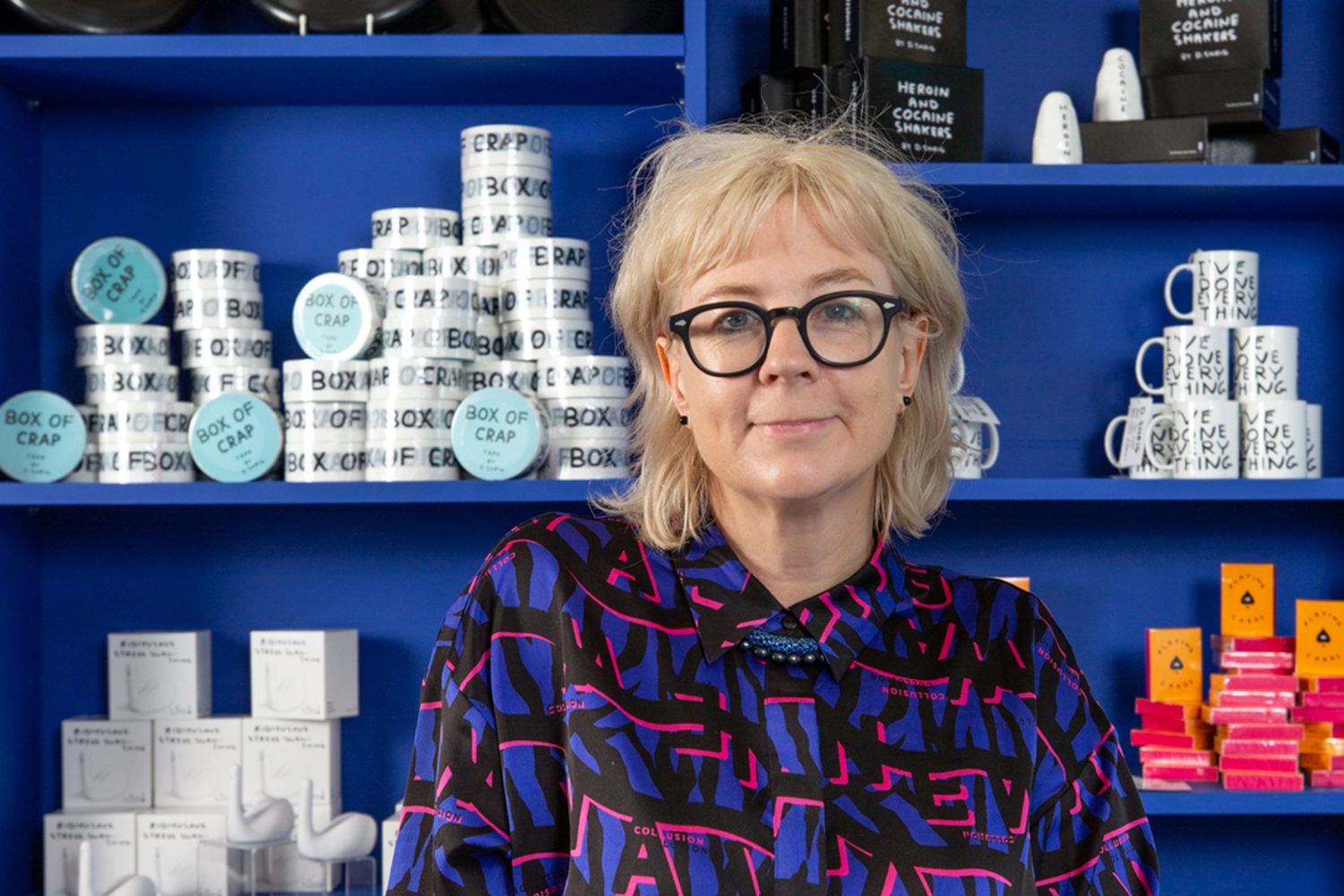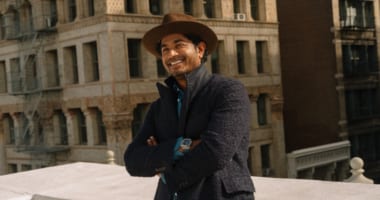About
Abigail Crompton is the founder of Melbourne-based company Third Drawer Down, and author of the 2020 book Truth Bomb: Inspiration from the Mouths and Minds of Women Artists.
Location
Melbourne, Australia
The Artsy Collector Series
We are asking 11 questions to illuminate untold collector stories and shed light on how Artsy can be used to discover artists and connect with galleries.
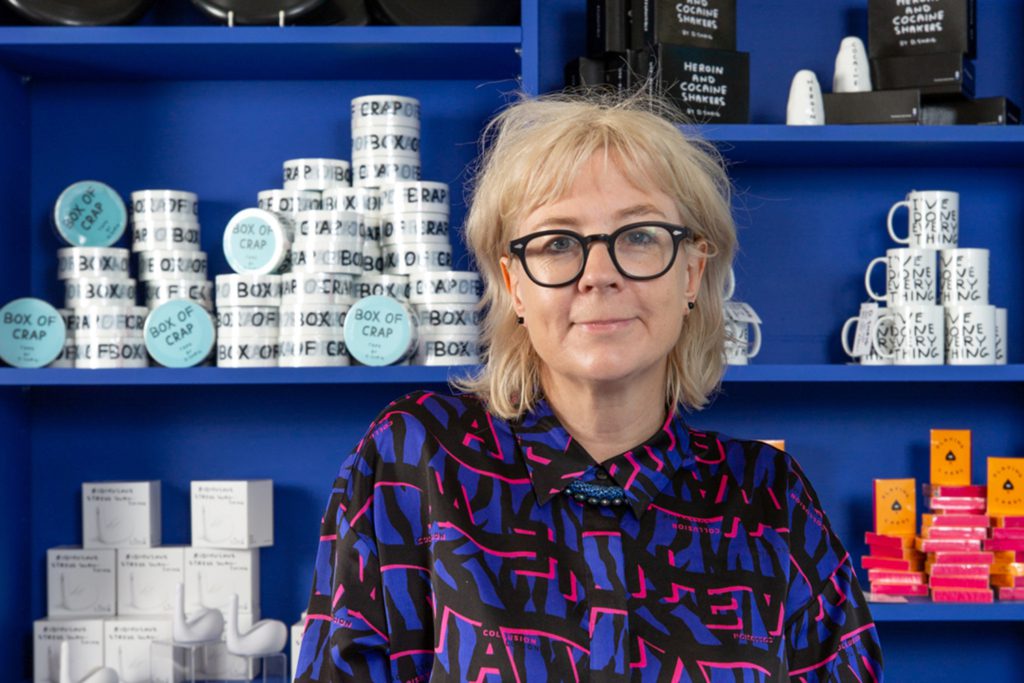
Portrait of Abigail Crompton. Courtesy of Abigail Crompton.
Australian collector Abigail Crompton is a strong believer in making art a part of every life. As the founder of Melbourne-based company Third Drawer Down, she has collaborated with artists since 2003 to produce limited-edition objects like housewares and accessories. Over the years, Crompton has realized such editions with major artists including Louise Bourgeois, David Shrigley, and Yayoi Kusama, and her collectibles can be found in museum gift shops across the globe. Crompton is also the author of the 2020 book Truth Bomb: Inspiration from the Mouths and Minds of Women Artists.
Crompton’s formidable art collection features a strong cohort of works by contemporary Australian artists like Tony Albert, Kaylene Whiskey, Tiger Yaltangki, and Vincent Namatjira, as well as international artists like Mickalene Thomas, Chris Ofili, Douglas Gordon, and Nathalie du Pasquier.
We recently caught up with Crompton to learn more about her collection, her love for prints and multiples, her plans to open her private collection to the public, and how she intends to continue building it.
Can you describe your collection in a sentence or less?
Art with a voice.
When and why did you start collecting art?
My collecting started in the early 2000s. I began with art multiples and works on paper. My collection back then was driven by the size of my apartment and my budget. I started collecting for the joy of it. I chose what was accessible and affordable.
My collection and my reasoning has evolved as my investment point has increased. What has stayed a constant is that I only buy what I like—art that speaks to me. This way, there’s no sense of disappointment if the value doesn’t increase.
I look for art with a loud female roar; an alternate point of view; a commentary on society; or a rendering of a particular moment in time.
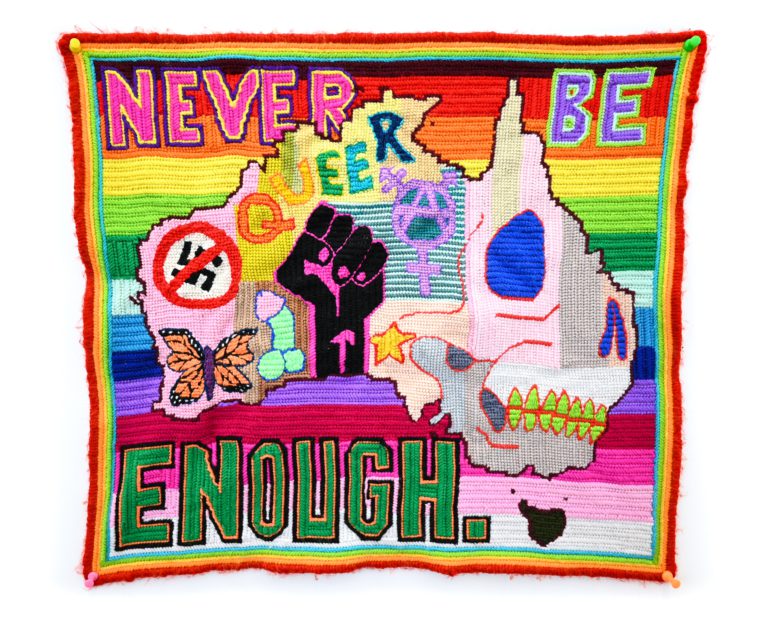
Paul Yore, Never Be Enough, 2021. Courtesy of the artist and STATION.
What is a piece you own that people are often drawn to or ask you about frequently?
I love telling the story of one piece I have that everyone asks about. I was in Paris and visiting Yvon Lambert Gallery, where I found a photo collage called Louise Duchamp et Marcel Bourgeois by Douglas Gordon and Anna Gaskell.
It struck me as a must-have because I worked with Louise Bourgeois, Douglas Gordon, and the Marcel Duchamp estate. It was on consignment and owned by an art collector and trader; it was beyond my budget.
I researched the collector, worked out what I had in my collection that he might want, and voilà—I swapped a collection of multiples for the piece. We were both very happy and I left Paris with Louise, Marcel, Douglas, and Anna under my arm. It’s a treasure.
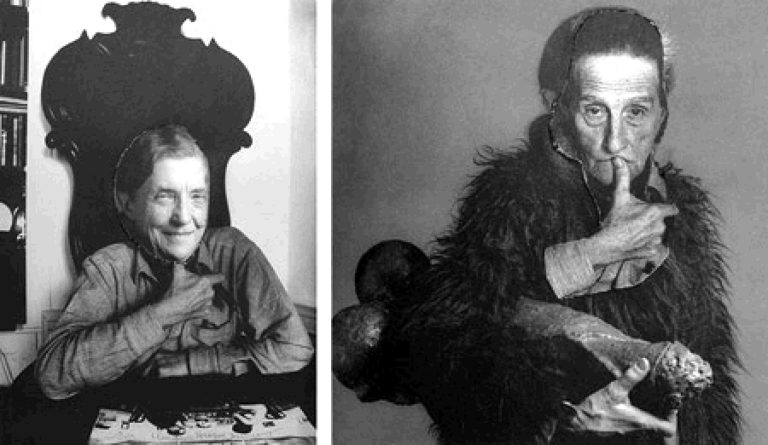
Douglas Gordon & Anna Gaskell, Louise Duchamp & Marcel Bourgeois, 2002. Courtesy of the artists.
Can you tell us about an artist you’ve discovered through Artsy?
I’m so excited by Artsy, it’s brilliant—a world of art at my fingertips. It’s true to say I have an Artsy addiction. My latest discovery is Allison Zuckerman. She pushes all of my buttons: reclaiming the female form with humor, passion, and joy. She’s spectacular.
Can you tell us about a piece you recently bought on Artsy?
I just purchased a work by Tony Albert. Thank goodness for Artsy through all the lockdowns. It’s a big tick having Tony in the collection, or as it was, a big click. Tony Albert’s work is absolutely amazing and speaks on so many levels. I’m looking forward to adding more and building out a collection of his work. And it’s exciting to add a piece from him to the collection alongside work by Kaylene Whiskey, Tiger Yaltangki, and Vincent Namatjira. This group of contemporary Australian First Nations artists have compelling and important voices and are beginning to find acclaim worldwide.
What is your collecting process like?
I’m always looking—right now is an exciting time for art with a voice. I’m looking for feeling and meaning through art, and when I see it and feel it, I’m overjoyed.
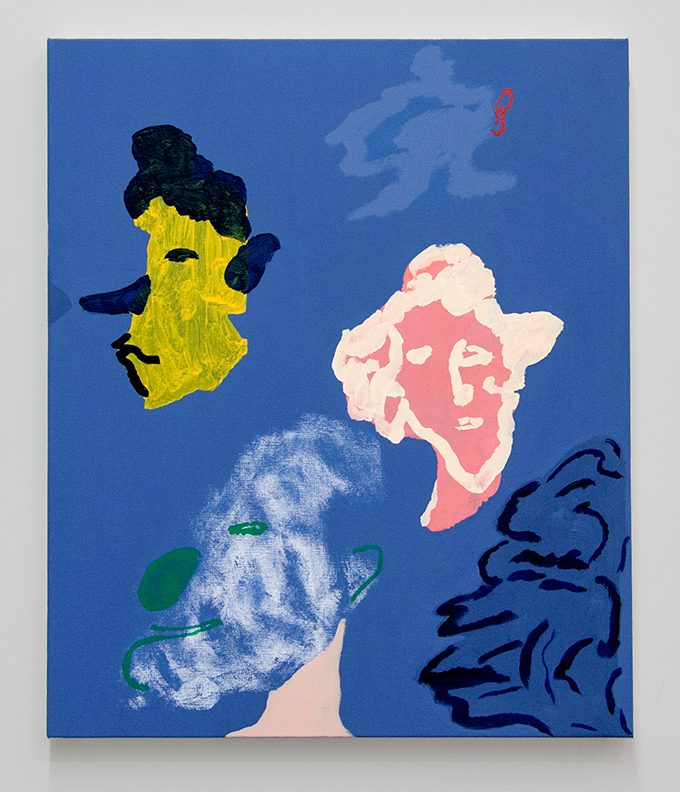
Tom Polo, First time face away, 2015. Courtesy of the artist and STATION.
What is the biggest challenge you encounter as an art collector? How have you overcome it?
The challenge is that institutions often acquire what I’m chasing. This is great for the artist and the values, but not so good for me. I’m collecting for love, not money, so while I’m always super pleased to see the institution beating me to art, it’s also a hard pill to swallow—especially scratchy if it involves a piece I want to add to our collection and have it sit alongside an earlier work by the same artist.
It all goes back to my love of multiples. I like to build across an artist’s body of work; I try to show the progression in the art and the changing point of view. I love storytelling shown over a timeline. The institutions are putting holes in my narrative of the artist.…I’m being tongue-in-cheek about the institutions—I’m all about art being accessible and that’s exactly what the institutions provide.
My solution is: If you can’t beat ’em, join ’em. Seriously though, my life has been spent making art accessible via my business, Third Drawer Down. The natural progression for me is to open my collection to the public. I’m working on building a gallery space now.
How do you build relationships with galleries?
A good relationship with a gallery is a joy for both parties. I invest time into researching so I don’t waste the galleries’ time. I provide written reasons why the artist might like to sell into my collection. It doesn’t matter how long I have known someone or a gallery, I don’t waste their time and I’m always prepared.
Importantly, I have respect for the individual at all times. It cuts both ways for me and I won’t buy from a gallery that is difficult to deal with, rude, or elitist, no matter how much I want the piece. Art collecting for me is about feeling good. No one is going to steal my joy.
I’m so excited by Artsy, it’s brilliant—a world of art at my fingertips. It’s true to say I have an Artsy addiction.
Abigail Crompton
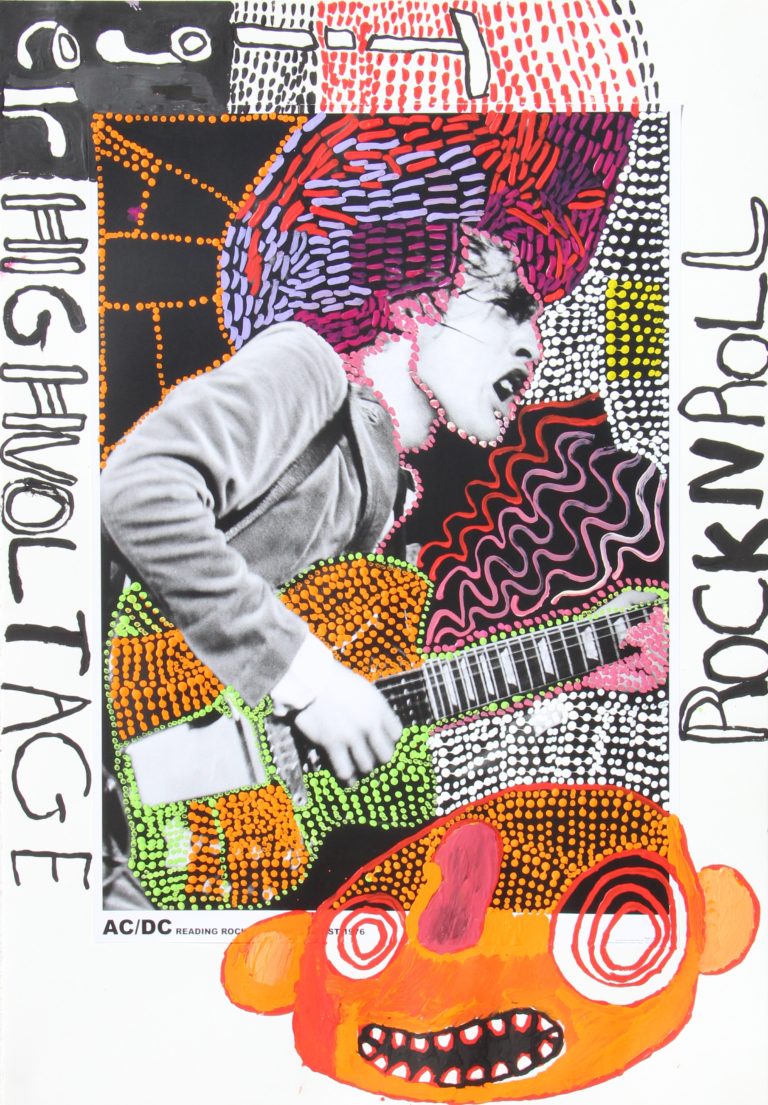
Tiger Yaltangki, HIGH VOLTAGE, 2021. © Tiger Yaltangki. Courtesy of the artist; Iwantja Arts; and Alcaston Gallery.
What trends are you seeing in the art market?
NFTs. Damien Hirst just blew up the market and Takashi Murakami is about to with a new release. It’s trending hard.
When you’re deciding whether or not to buy an artist’s work, what’s the most important information that helps you make that decision?
Question one: Am I in love with the work? Depending on my knowledge of the artist I head off on a research journey to justify the purchase in my own mind.
I answer questions like: What is the history of the artist and what are they like? Who else has the work in their collection? How difficult will the work be to ship? What is the likelihood of an increase in value?
What do you enjoy most about being a collector?
The visual joy is overwhelming; art on every wall, in every space, all around me. I feed off it, figuratively and literally.
